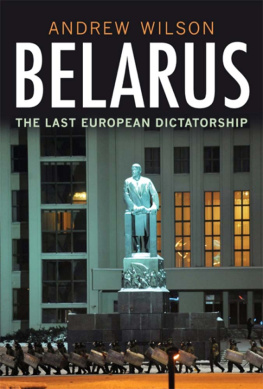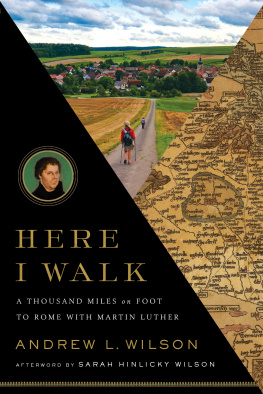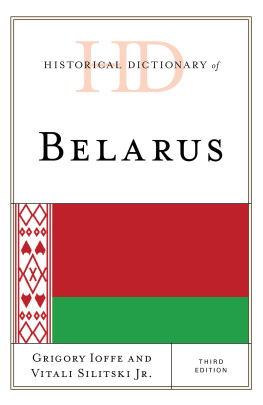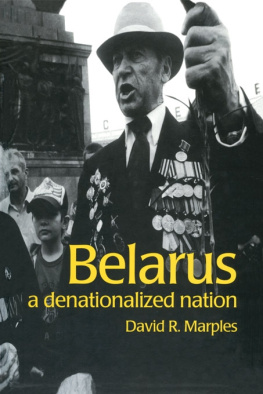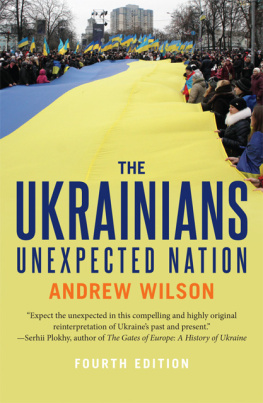


Copyright 2011 Andrew Wilson
All rights reserved. This book may not be reproduced in whole or in part, in any form (beyond that copying permitted by Sections 107 and 108 of the U.S. Copyright Law and except by reviewers for the public press) without written permission from the publishers.
For information about this and other Yale University Press publications, please contact:
U.S. Office:
Europe Office:
Set in Minion Pro by IDSUK (DataConnection) Ltd
Printed in Great Britain by MPG Books Group, Bodmin, Cornwall
Library of Congress Cataloging-in-Publication Data
Wilson, Andrew, 1961
Belarus: the last European dictatorship/Andrew Wilson.
p. cm.
Includes bibliographical references.
ISBN 9780300134353 (cloth:alk. paper)
1. BelarusHistory. 2. BelarusPolitics and government. 3. Political cultureBelarusHistory. 4. BelarusPolitics and government19915. Lukashenko, Aleksandr, 19546. DictatorshipEuropeCase studies. I. Title.
DK507.54.W55 2011
947.8dc22
2011013538
A catalogue record for this book is available from the British Library.
10 9 8 7 6 5 4 3 2 1
To Vitali
CONTENTS
ILLUSTRATIONS AND MAPS
St Safiia cathedral of the Holy Wisdom, Polatsk, eleventh century.
Fortress-church, Synkovichi, 151856.
Euphrosyne's Cross, twelfth century.
Cyril of Turaw.
Resurrection cathedral, Braslaw, 1874.
Unknown artist, Icon of Our Lady of Minsk, midlate sixteenth century. National Art Museum, Minsk.
Cathedral of St Virgin Mary, Minsk, finished 1710.
Red Church, Minsk, 190510.
Valiantsin Volkaw, Minsk: 3rd July 1944, 1955. National Art Museum, Minsk.
Marc Chagall, The Blue House, 1917. Chagall/ ADAGP, Paris and DACS, London 2011.
Marc Chagall, Over Vitsebsk, 191520. Chagall/ ADAGP, Paris and DACS, London 2011.
Lukashenka's neo-Soviet national emblem, introduced in 1995.
The Belarus tractor.
The Red and White Flag, 1918, 19434 and 19925, still used by anti-Lukashenka demonstrators.
For Belarus! propaganda posters from the 2006 election.
The new National Library, Minsk, 2006.
Lukashenka plays ice hockey, 2008.
Belarusian money. The hare, 1992; a 20,000 rouble note, 2000.
Maps
Polatsk at the height of its power, twelfth century.
The origins of Litva, according to the joint theory.
Litva, mid-sixteenth century.
Uniate-Land, early eighteenth century.
Belarusian lands in the nineteenth century.
The changing shape of the Belarusian Soviet Socialist Republic, 192145.
While the author and publisher have made every attempt to discover the provenance of illustrative material, there are some instances where the photographers remain unidentified.
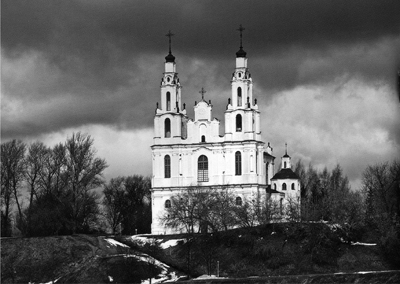
The St Safiia cathedral of the Holy Wisdom, Polatsk, above the river Dzvina. Built in the eleventh century, but with Baroque (Unaite) additions in the seventeenth and eighteenth centuries.
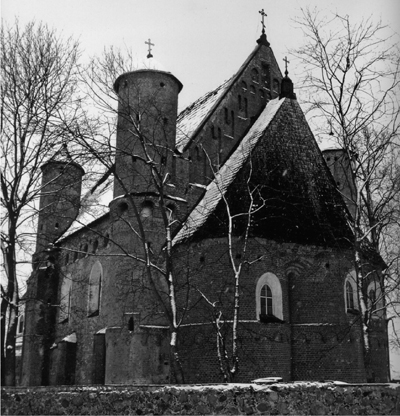
Synkovichi fortress-church, in the unique local Gothic-Orthodox style, built 151856.
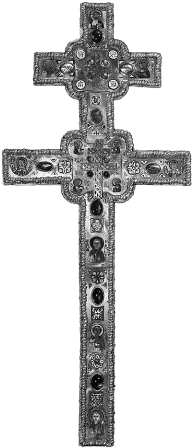
Euphrosyne's Cross, twelfth century. Also the symbol of the Youth Front.
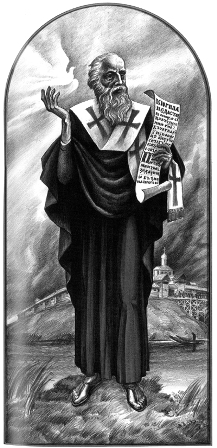
The great Orthodox scholar Cyril of Turaw.
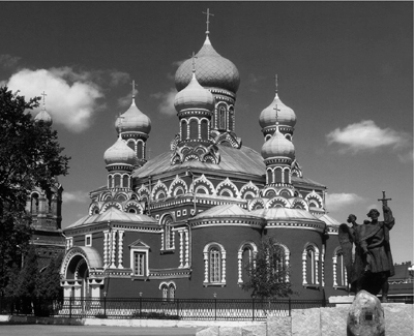
The Resurrection cathedral in Barysaw, north of Minsk, 1874, in the Russian Revival style.

Icon of Our Lady of Minsk, mid-late sixteenth century, showing a more naturalistic post-Renaissance style.

Cathedral of St Virgin Mary, finished 1710; Central European Baroque in the middle of Minsk.
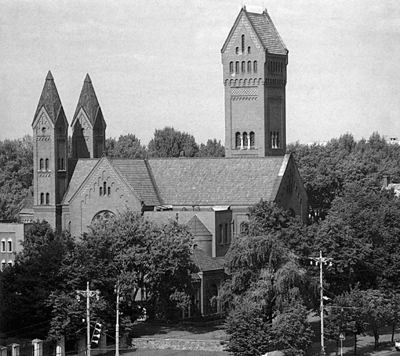
The Red Church, Minsk the Church of SS Simon and Helena, 190510. Scene of the demonstrations in December 2010.

Valiantsin Volkaw, Minsk: 3rd July 1944, (1955). A Socialist Realist classic showing Soviet troops returning to the ruined city in 1944. A massive painting, it took Volkaw nine years to complete.
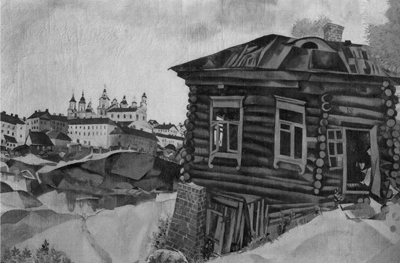
Marc Chagall, The Blue House (1917).
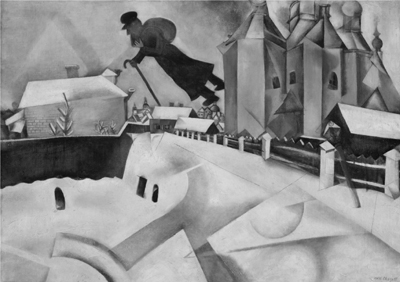
Marc Chagall, Over Vitsebsk (191520). The local Jews and Orthodox lead parallel but separate lives.
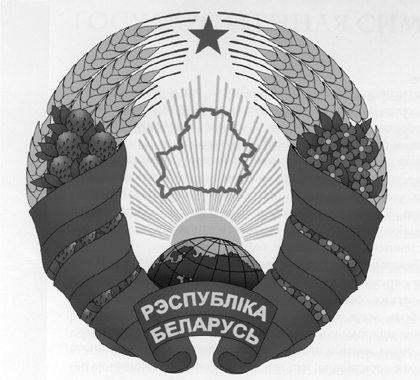
Lukashenka's neo-Soviet national emblem, replacing the Pahonia after the referendum in 1995. The green outline in the middle is actually Belarus.

The Belarus MTZ the iconic Soviet Belarusian product. To some, Belarus is still better known as a tractor.

The Red and White Flag, the state flag in 1918, 19434 and 19925, now a symbol of opposition to Lukashenka; at protests after another election fix in 2006.
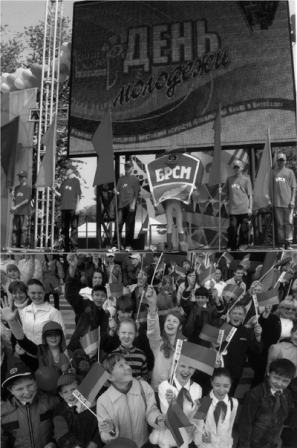
For Belarus! Slightly more orchestrated demonstrations in support of the government.
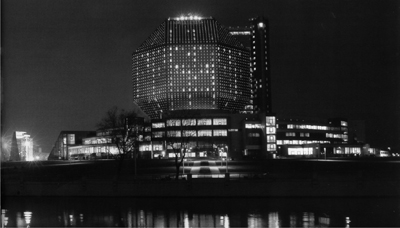
The new National Library, Minsk. Symbol of Lukashenka's social contract and kitsch architectural taste.
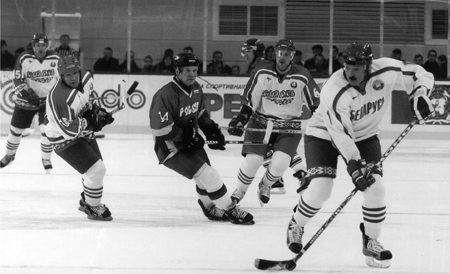
Next page
